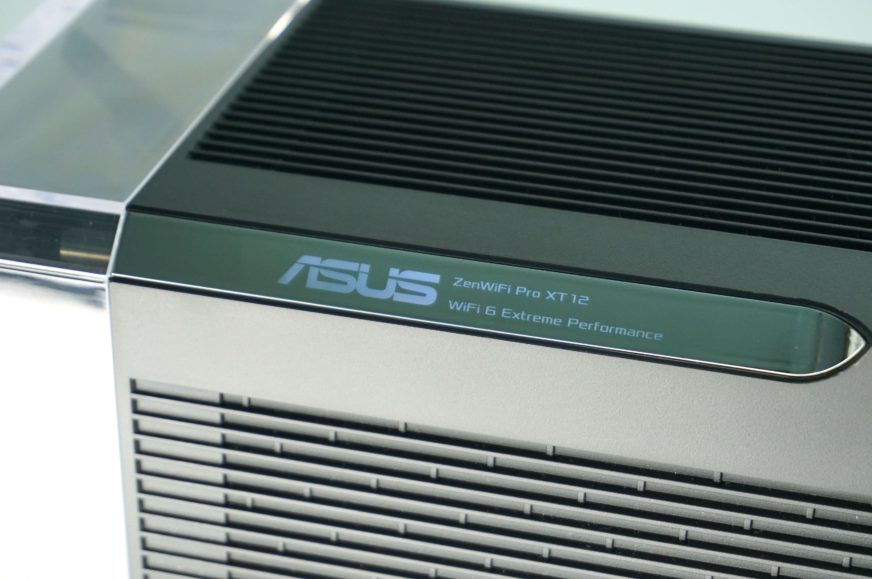Test results
Routers, for the most part, are not among the design-appealing devices you’d want to show off. They are usually white or black boxes with antennas sticking out of them and you hide them somewhere behind your computer, TV or in a closet. But that doesn’t have to be the rule, and the new Asus ZenWiFi Pro XT12 is proof of that. In addition to the unconventional design, the tested model impresses with its focus on mesh networking, which Asus routers are known for.
In the immediate vicinity
The new product achieves very good results in WiFi speed tests, which thanks to the 160 MHz bandwidth and 4 × 4 configuration is not such a big surprise, but rather a confirmation of paper assumptions and expectations. Still, it’s nice to see how the inexpensive AX53U fares. The AC88U, on the other hand, is already starting to show its age.
From a distance of ten metres
Ten antennas and Rangeboost Plus also achieve high numbers in the distance test and especially in the upload. Surprisingly the AC88U did well in downloading, but this is more of an exception proving the rule.
Wired transfers
When testing cable transfers between the two devices, we see that the XT12 offers very balanced upload and download numbers, offering 30–50 % higher rates compared to the other models.
Power draw
We measure the power draw with a new methodology using a UNI-T UT71E multimeter. We compared the power draw at both idle and full load during the speed tests. The AX53U had the lowest power draw, with an idle power of 3.1–3.2 W; after the LAN cable and WiFi tests, the power draw increased to a maximum of 4.4 W. Second in order was the XT12, which hovered around 11 W and only slightly exceeded 12 W at maximum. The oldest AC88U had the highest power draw with an idle draw of 13.3 W and a peak of 14.5 W. An interesting finding during the test was that when the LAN cable was plugged in, the power draw on all routers increased by about 1 W.












Finally they stop making routers that are too big to put on a desk. I don’t understand why they were putting so much work in design or RGB stuff for a router that you can’t put in a desk anyways. On top of that it actually still was ugly with those antennas sticking out and always falling… And lastly wifi routers should never be put on a desk because that affects the range of your WiFi signals, this is too close to the floor or other electronics that can interfére. Wifi routers work best when pour at least 1.8,m height, because then they have better line of sight to clients. And they better penetrate walls, because wall outlets and other electric cables running in the walls are all below 1,5m height. Same thing with waterer tubes or heating radiators, they all block wifi, because water blocks radio signals. .Putting your router higher then 1,5m gives therefore much better wall penetration and higher speeds.
Do why make something beautiful that you need to put high anyway, to make it work better?
What I also miss with Asus : is outdoor acces points for wifi in the garden (cameras, smart lawnmower,etc..) asus is the only wifi brand that doesn’t have an outdoor solution
According to them there is no weekend because nobody gives this feedback on their Helpdesk, surveys,feature request s,etc..
Everybody: if you want outdoor wifi routers, let them know…